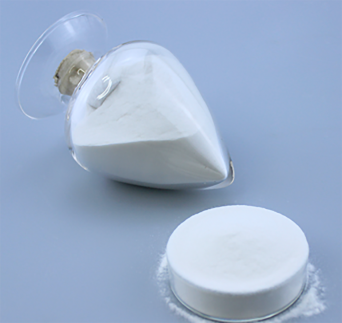
Dec . 11, 2024 11:04 Back to list
Exploring the Applications and Properties of Hydroxypropyl Methylcellulose in Various Industries
Understanding Cellulose Ether HPMC Properties and Applications
Cellulose ethers are a class of compounds that derive from cellulose, a natural polymer found in the cell walls of plants. Among the various types of cellulose ethers, Hydroxypropyl Methylcellulose (HPMC) stands out due to its unique properties and versatility in various applications, particularly in the fields of construction, pharmaceuticals, and food production.
What is HPMC?
Hydroxypropyl Methylcellulose is a semi-synthetic polymer that is created by the substitution of hydroxyl groups on cellulose molecules with hydroxypropyl and methyl groups. This modification not only enhances the solubility of cellulose in water but also improves its functional properties. HPMC is a white or off-white powder that is non-ionic and odorless, making it an excellent choice for a variety of applications.
Properties of HPMC
One of the most notable properties of HPMC is its excellent water retention capability. This characteristic is crucial in applications where moisture preservation is essential. In construction, for example, HPMC is used in cement-based products, helping to keep the mixture workable for longer periods, which is crucial for ensuring a strong and durable structure.
HPMC also possesses thickening and stabilizing properties. When dispersed in water, it forms a viscous solution that can provide a desirable texture and stability to formulations, making it particularly useful in cosmetics and pharmaceuticals. The viscosity of HPMC can be adjusted depending on the degree of substitution and the molecular weight of the polymer, allowing for customized formulations to meet specific needs.
Additionally, HPMC is chemically stable, non-toxic, and biodegradable. These environmentally friendly attributes make it an attractive option for manufacturers looking to create sustainable products. Its low level of toxicity allows for safe use in pharmaceutical formulations, including tablets and capsules.
Applications of HPMC
cellulose ether hpmc

Construction Industry
In the construction sector, HPMC is widely used as an additive in cement-based materials, such as tile adhesives, grout, and plaster. It improves the workability and adhesion of these products, ensuring that they can be applied easily and will bond effectively to various surfaces. The water-retaining properties of HPMC prevent premature drying, allowing for longer open times and reducing the likelihood of cracking.
Pharmaceuticals
HPMC's application in the pharmaceutical industry is primarily as an excipient and film-forming agent. It can be found in tablet formulations, where it aids in controlling the release of active ingredients, enhancing the bioavailability of drugs. Furthermore, HPMC is leveraged in the production of extended-release and controlled-release formulations, allowing for better patient compliance by reducing the frequency of dosage. Its use in capsules and as a binder makes it a valuable component in many over-the-counter and prescription medications.
Food Industry
In the food industry, HPMC is employed as a thickening, emulsifying, and stabilizing agent. It is used in a variety of products, including baked goods, sauces, and dairy products. HPMC can improve the texture and mouthfeel of food products, while also prolonging shelf life by preventing separation and maintaining moisture content. As consumers increasingly seek clean-label products, the use of HPMC derived from natural sources aligns with the trend toward healthier, less processed foods.
Conclusion
Hydroxypropyl Methylcellulose (HPMC) is a versatile cellulose ether that offers a range of benefits across multiple industries. Its unique properties, including water retention, thickening, and chemical stability, make it an essential ingredient in construction materials, pharmaceuticals, and food products. As the demand for eco-friendly and sustainable ingredients continues to rise, HPMC’s biodegradable and non-toxic nature positions it favorably in markets focused on health and sustainability. As research and development continue, we can expect to see even broader applications and innovations involving HPMC, making it a key component in the advancement of various industries.
-
Unlocking the Benefits of HPMC Products: A Gateway to Versatile Applications
NewsAug.07,2025
-
Tile Bonding Cellulose: The Key to Superior Adhesion and Durability
NewsAug.07,2025
-
Hydroxypropyl Methylcellulose Powder: The Versatile Component in Modern Pharmaceuticals
NewsAug.07,2025
-
Hydroxyethyl Cellulose: The Versatile Solution for Various Industries
NewsAug.07,2025
-
Hydroxyethyl Cellulose (HEC): The Versatile Polymer for Various Applications
NewsAug.07,2025
-
The Ultimate Guide to Mortar Bonding Agent
NewsAug.06,2025







